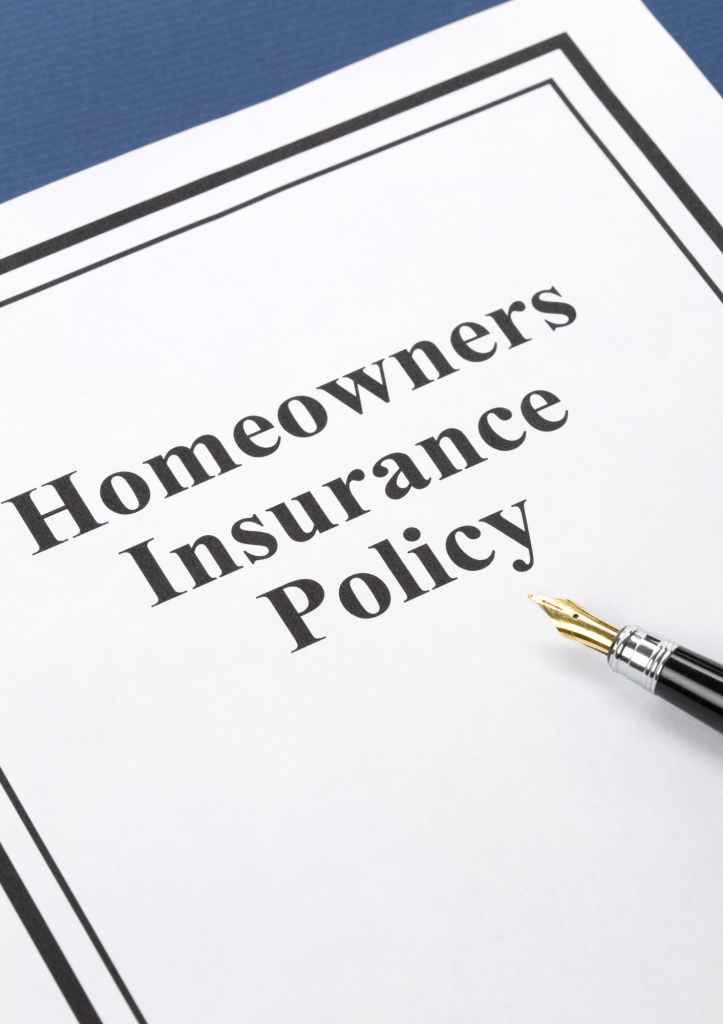
What’s Covered (and What Isn’t) by My Homeowner’s Insurance?
Homeowner’s insurance is one of those essentials that comes with owning a house, but it’s often misunderstood. Many homeowners don’t realize what their policy truly covers—and what it doesn’t—until it’s too late. While a good policy protects against many common risks, there are key exclusions that could leave you vulnerable if you’re not prepared.
In this article, we’ll break down the details of what’s typically covered by homeowner’s insurance, highlight common exclusions, and offer tips to help you fill any gaps in your coverage.
What Does Homeowner’s Insurance Typically Cover?
Homeowner’s insurance is designed to protect you financially from specific risks and events. While coverage can vary depending on your insurer and policy, most standard policies include these four main categories:
1. Dwelling Coverage
This is the core of your policy and protects the physical structure of your home, including the walls, roof, floors, and attached structures like a garage or deck. Common perils covered by dwelling insurance include:
- Fire and smoke damage: Whether it’s caused by a kitchen mishap or a wildfire, fire and smoke damage is one of the most common claims.
- Windstorms and hail: Strong winds and hail can wreak havoc on roofs, siding, and windows, and most policies cover these events.
- Lightning strikes: Lightning damage, including fires sparked by strikes, is typically covered.
- Vandalism: Damage caused by intentional acts like graffiti or broken windows is often included.
- Falling objects: This can include tree branches falling onto your roof or other debris.
However, there are limits to dwelling coverage. For example:
- Wear and tear isn’t covered: Damage from normal aging or lack of maintenance is excluded. If your roof leaks because it’s past its lifespan, repairs won’t be covered.
- Some natural disasters may be excluded: While hurricanes or tornadoes might be covered, flooding or earthquakes usually aren’t.
💡 Tip: Make sure your coverage limit reflects the cost to rebuild your home, not just its market value. Construction costs can fluctuate, and you don’t want to be underinsured.

2. Personal Property Coverage
This part of your policy protects your belongings—furniture, electronics, clothing, appliances, and more—against covered risks like theft, fire, or storm damage.
Here are some specifics about personal property coverage:
- Off-premises coverage: Many policies cover your belongings even when they’re not at home. For example, if your laptop is stolen from your car or a hotel room, you may be reimbursed.
- Reimbursement limits: Policies typically have limits on specific categories of items. For instance, jewelry, artwork, and collectibles may only be covered up to a few thousand dollars unless you purchase additional coverage.
💡 Example: Let’s say your home is burglarized, and the thieves take your TV, laptop, and a valuable watch. The TV and laptop may be fully reimbursed under personal property coverage, but the watch may exceed your policy’s limit unless you added a rider or endorsement for it.
3. Liability Protection
Liability coverage is a vital yet often overlooked part of homeowner’s insurance. It protects you financially if you’re held responsible for injuries or damages to someone else.
Here’s what it typically covers:
- Injuries on your property: If a guest slips on your icy steps or trips over a loose rug and is injured, your liability coverage can cover their medical expenses and legal fees if they sue.
- Accidental property damage: If you or a family member accidentally damages someone else’s property, liability insurance may cover the costs. For example, if your child breaks a neighbor’s window with a baseball, the repairs could be covered.
- Dog bites: Many policies cover legal and medical costs if your dog bites someone, but there are exclusions for certain breeds.
💡 Tip: Consider increasing your liability limits beyond the default amount, especially if you have assets like savings or investments that could be at risk in a lawsuit.
4. Additional Living Expenses (ALE)
If your home becomes uninhabitable due to a covered disaster, ALE coverage helps with temporary living costs while repairs are made.
Covered expenses can include:
- Hotel stays: The cost of lodging is reimbursed if you can’t stay in your home.
- Restaurant meals: If you’re eating out because your kitchen is unusable, ALE can cover the extra cost.
- Other incidentals: Laundry, transportation, and pet boarding fees may also be included.
💡 Example: After a fire damages your home, ALE might pay for a rental property while repairs are underway, along with additional expenses you wouldn’t have if you were living at home.
What Isn’t Covered by Homeowner’s Insurance?
While homeowner’s insurance provides broad protection, it doesn’t cover everything. Understanding the exclusions is critical to avoiding unpleasant surprises.
1. Flooding
Flood damage is not covered under standard homeowner’s insurance policies. Floods caused by heavy rains, storm surges, or overflowing rivers require a separate flood insurance policy.
💡 Tip: Even if you don’t live in a high-risk flood zone, consider flood insurance. According to FEMA, more than 20% of flood claims come from properties outside designated flood areas.
2. Earthquakes
Earthquake damage, including ground movement, isn’t covered by most policies. In earthquake-prone regions, you’ll need a separate policy or rider for this type of coverage.
3. Maintenance Issues
Damage from neglect, wear and tear, or poor maintenance is considered the homeowner’s responsibility. This includes:
- Mold growth from untreated water damage
- Pest infestations (like termites)
- Gradual leaks that go unrepaired
💡 Pro Tip: Regular home maintenance, like roof inspections and pest control, can prevent these issues and reduce the risk of costly repairs.
4. Luxury Items Without Additional Coverage
Items like fine jewelry, rare art, or expensive electronics often have reimbursement caps. For example, a standard policy may only cover $1,500 worth of jewelry, even if your collection is worth much more. Adding a scheduled personal property endorsement can provide the extra coverage you need.
5. Acts of War of Nuclear Hazards
Though rare, these are excluded from all standard policies. If you live in a unique risk zone, consult your insurance provider about specialized options.
6. Certain Natural Disasters
While windstorms, hail, and fire are often included, some natural disasters—like sinkholes or mudslides—are excluded. Check your policy for specifics if you live in an area prone to such risks.
How Your Mortgage Loan Originator Can Help
When securing a mortgage, your mortgage officer plays a critical role in helping you navigate your homeowner’s insurance options. They’re not just there to help with financing—they can also:
- Discuss coverage needs: Your mortgage officer can help you understand the insurance requirements tied to your loan, such as specific levels of dwelling coverage.
- Connect you with an insurance expert: Many mortgage officers have trusted networks of insurance professionals who can provide tailored guidance based on your home and location.
By working closely with your mortgage officer and an insurance expert, you can feel confident that your coverage aligns with your needs and financial goals.
How to Ensure You’re Fully Covered
To make sure you’re not caught off guard by gaps in coverage, follow these steps:
Review Your Policy Annually
Life changes—whether it’s a home renovation, a new pet, or purchasing high-value items—can impact your coverage needs.Add Endorsements for High-Value Items
Consider extra coverage for valuable belongings like jewelry or collectibles.Purchase Separate Policies for Flood or Earthquake Risks
If you’re in a high-risk area, these additional policies can be lifesavers.Create a Home Inventory
Document your belongings with photos or videos, and keep receipts for big-ticket items.Work with an Insurance Agent
A licensed agent can help clarify policy details and recommend ways to enhance your protection.
Final Thoughts
Homeowner’s insurance is a vital safety net, but it’s not one-size-fits-all. Take the time to understand your policy, identify potential gaps, and explore additional coverage as needed.
Your mortgage officer is a valuable resource, not only for financing your home but also for helping you connect with the right insurance professionals. Together, you can ensure your home—and your peace of mind—are fully protected.
Ready to buy a home? Our team of Mortgage Experts can help!
